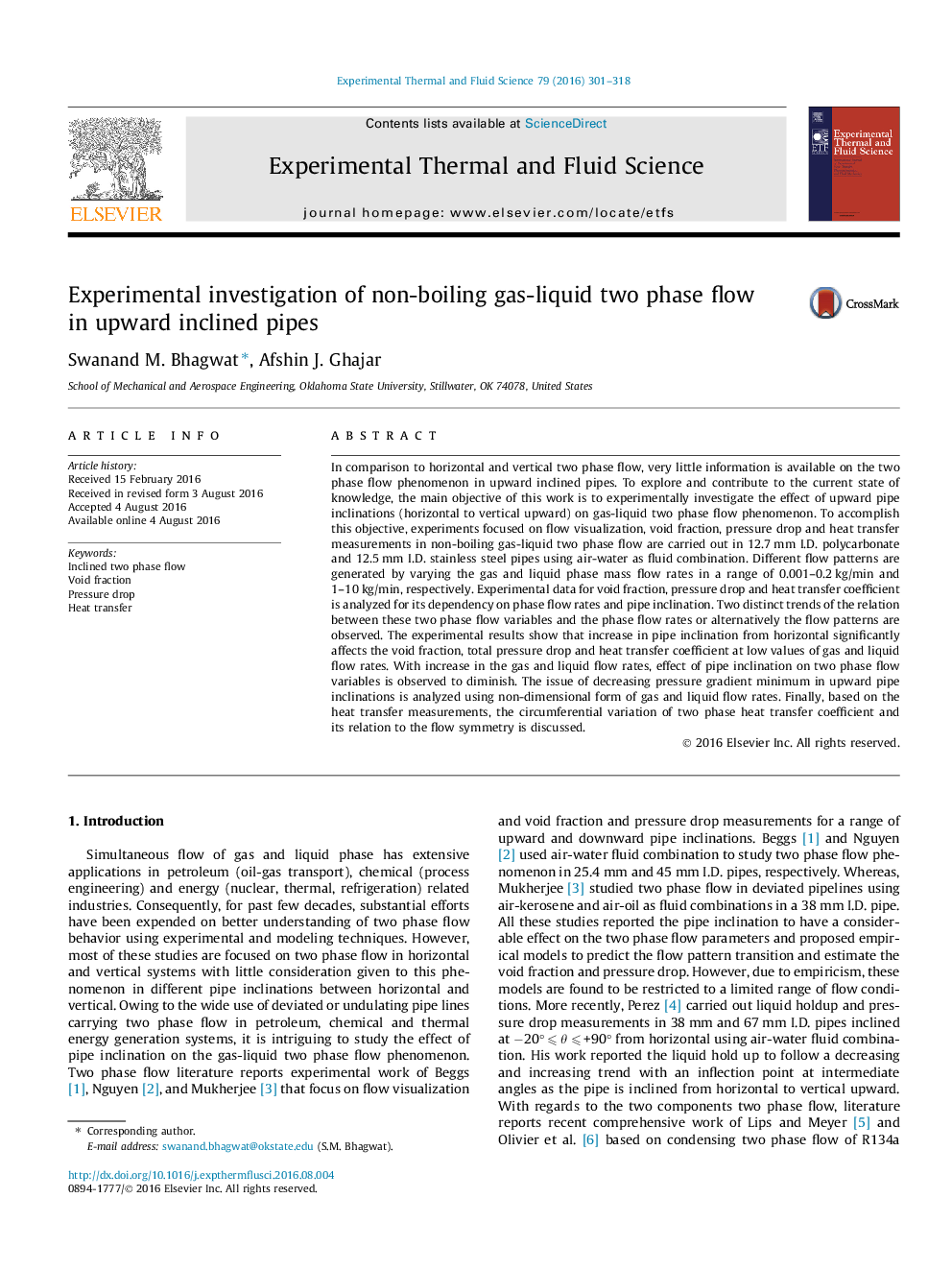| Article ID | Journal | Published Year | Pages | File Type |
|---|---|---|---|---|
| 651106 | Experimental Thermal and Fluid Science | 2016 | 18 Pages |
Abstract
In comparison to horizontal and vertical two phase flow, very little information is available on the two phase flow phenomenon in upward inclined pipes. To explore and contribute to the current state of knowledge, the main objective of this work is to experimentally investigate the effect of upward pipe inclinations (horizontal to vertical upward) on gas-liquid two phase flow phenomenon. To accomplish this objective, experiments focused on flow visualization, void fraction, pressure drop and heat transfer measurements in non-boiling gas-liquid two phase flow are carried out in 12.7Â mm I.D. polycarbonate and 12.5Â mm I.D. stainless steel pipes using air-water as fluid combination. Different flow patterns are generated by varying the gas and liquid phase mass flow rates in a range of 0.001-0.2Â kg/min and 1-10Â kg/min, respectively. Experimental data for void fraction, pressure drop and heat transfer coefficient is analyzed for its dependency on phase flow rates and pipe inclination. Two distinct trends of the relation between these two phase flow variables and the phase flow rates or alternatively the flow patterns are observed. The experimental results show that increase in pipe inclination from horizontal significantly affects the void fraction, total pressure drop and heat transfer coefficient at low values of gas and liquid flow rates. With increase in the gas and liquid flow rates, effect of pipe inclination on two phase flow variables is observed to diminish. The issue of decreasing pressure gradient minimum in upward pipe inclinations is analyzed using non-dimensional form of gas and liquid flow rates. Finally, based on the heat transfer measurements, the circumferential variation of two phase heat transfer coefficient and its relation to the flow symmetry is discussed.
Related Topics
Physical Sciences and Engineering
Chemical Engineering
Fluid Flow and Transfer Processes
Authors
Swanand M. Bhagwat, Afshin J. Ghajar,
